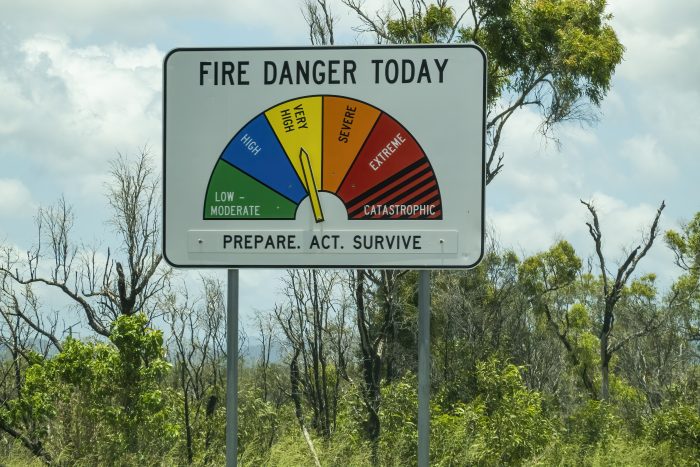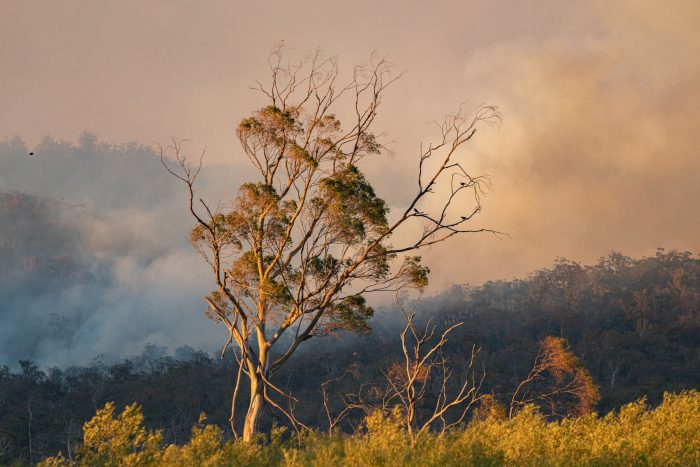Written by Laure Poncet
In a recent study, climate scientists from the ARC Centre of Excellence for Climate Extremes and Monash University found drought to be a major source of fire risk in Australia under climate change.
The researchers explored how the modified Fosberg Fire Weather Index (FWI) – a proxy for fire weather – changed under climate change, particularly during the different phases of El Niño-Southern Oscillation (ENSO) known as the El Niño and La Niña.
They found a substantial increase in FWI, which they attributed to increased drought conditions with climate change. This effect was particularly important in Northern Australia during La Niña.
Dr Hien Bui, the lead author of the study and a research fellow at the ARC Centre of Excellence for Climate Extremes, said: “We show a potential increase in FWI under global warming, suggesting a higher chance of fires in the future. Our analysis reveals that drought is the main factor contributing to this fire weather condition anomaly.”
What is the fire weather index?
Weather conditions, such as wind, temperature, humidity, and rainfall, play a pivotal role in the ignition and spread of fires. Various fire weather indices have been developed to understand which weather conditions wildfires are particularly sensitive to. One of these is the modified Fosberg FWI (hereafter FWI), which has been widely used to assess fire weather in many places around the globe.
The index takes into account four key meteorological factors: temperature, relative humidity, wind speed, and the drought factor—how dry the landscape is. These factors are combined in a specific formula to calculate the FWI. Generally, larger values of FWI are associated with extended flame lengths and spread.

In the study, the FWI was used as a proxy of fire, specifically to assess fire weather conditions in Australia, a region particularly vulnerable to wildfires.
“The FWI is a useful tool to help understand which environmental factors influence wildfires. It is important to understand how air temperature, moisture and wind speed influence wildfires, especially because those variables might change with climate change, impacting the occurrence and severity of wildfires,” said Bui.
What the study found: FWI rises with climate change amid growing drought conditions
Using high-resolution simulations, the researchers investigated how the FWI and its components respond to climate change, particularly during the different phases of ENSO.
ENSO is a natural phenomenon associated with changes in sea surface temperatures in the central and eastern tropical Pacific. It comprises two phases: El Niño and La Niña. During El Niño, temperatures in those regions are warmer than average, while during La Niña, they are cooler than average. Neutral conditions occur when neither El Niño nor La Niña are present.
Bui explained that examining the relationship between the FWI and ENSO is particularly important, as ENSO has a complex connection with Australian weather.
“El Niño usually increases the chance of dry and warm weather in southern and eastern Australia , particularly in spring, while La Nina usually brings cold and wet conditions across the continent. This, in turn, can influence the occurrence of wildfires,” she said.
The study revealed a substantial increase in FWI across most regions of Australia under neutral conditions by the end of the 21st century, suggesting a higher chance of fire weather with climate change. This effect was particularly pronounced in the central and western regions, which currently experience the highest FWI.
“Our study revealed a pattern that resembles the “rich-get-richer” pattern, meaning that regions which already experience a high chance of fire weather, are also those that will likely experience an increase in FWI in the future.”
FWI also showed a substantial increase during La Niña, particularly in Northern Australia.

Navigating the impacts of drought due to climate change
To understand what drives the increase in FWI, the researchers quantified the contribution of each component of the FWI – humidity, temperature, wind speed, and the drought factor, which measures the dryness of the fuel – to that increase. Both under neutral conditions and in the La Niña phase, drought was identified as the main variable contributing to the FWI increase.
“We found that the increased FWI across Australia is primarily due to the increase in the drought factor, which is in agreement with previous studies showing an increase in drought conditions under global warming.”
“The increase in drought during La Niña due to global warming could lead to more fires in the central-northern regions of Australia. This is a significant finding that demands attention and action to mitigate the potential impact.”
While the study sheds light on the changes in fire weather conditions due to global warming, Bui explained the findings don’t fully explain future changes in fire weather.
“While our study does demonstrate how environmental factors impact FWI variabilities in Australia, we do not anticipate our results to fully explain wildfire changes, such as fire count, burned area, or fire emissions.”
“We also did not take into account impacts of other climate modes such as the Indian Ocean Dipole, which could influence fire weather conditions in the future.”
Finally, Bui explained that model biases, such as those in humidity and wind speed simulation, can significantly impact FWI calculations. Examining these questions is currently being done and will be detailed in forthcoming papers.
